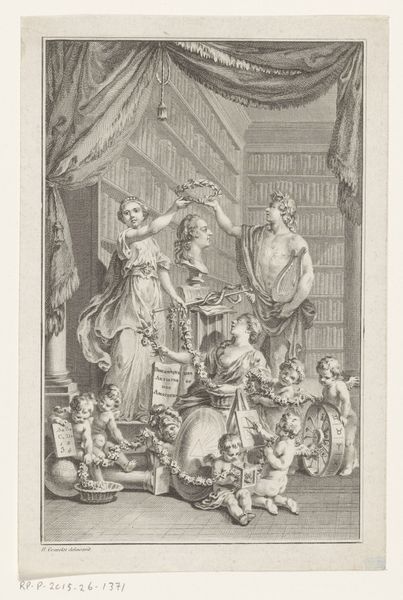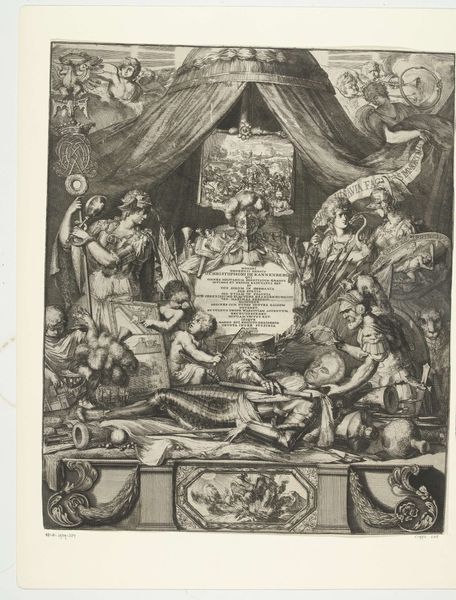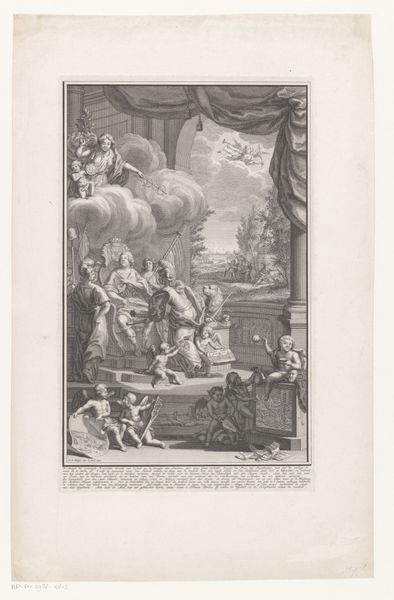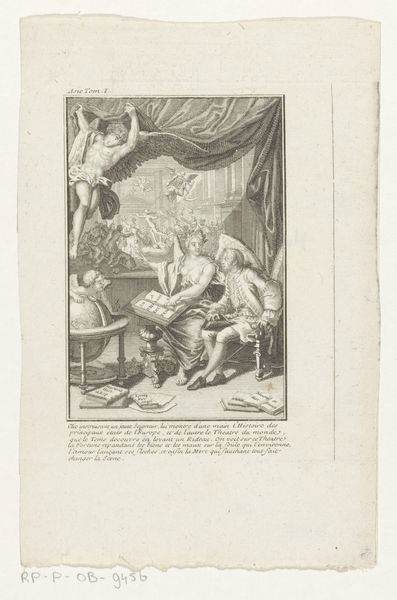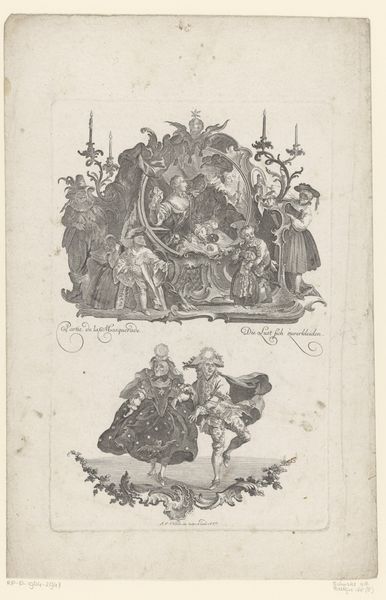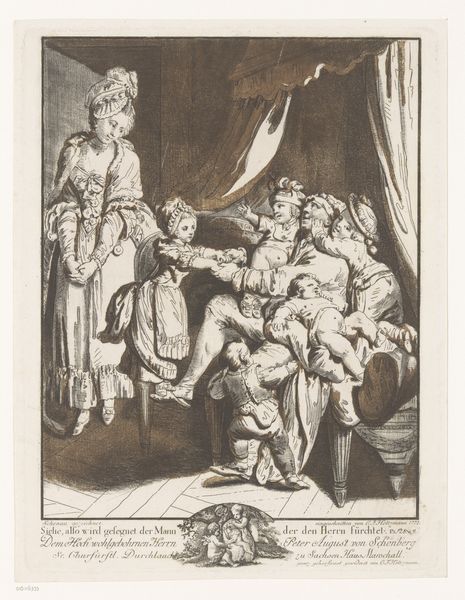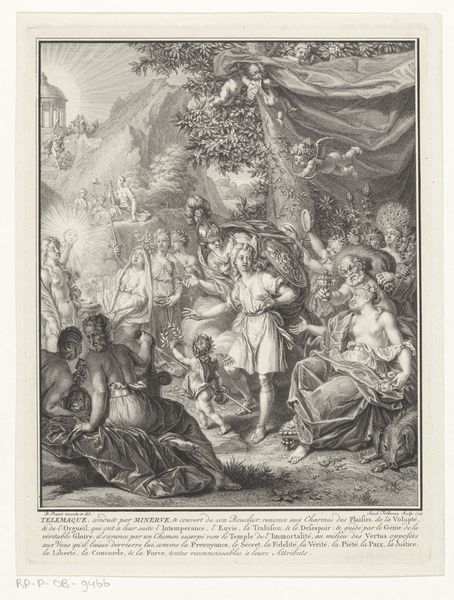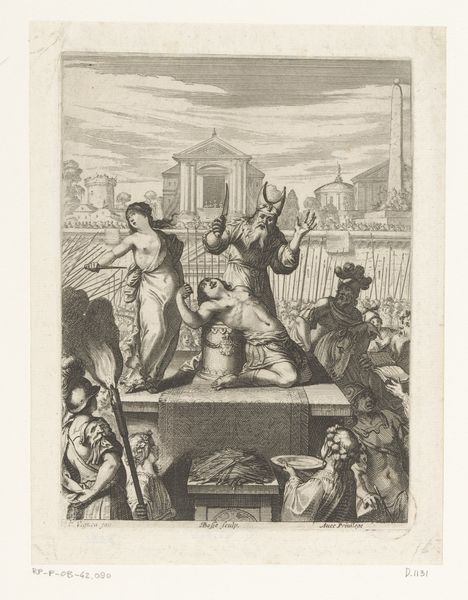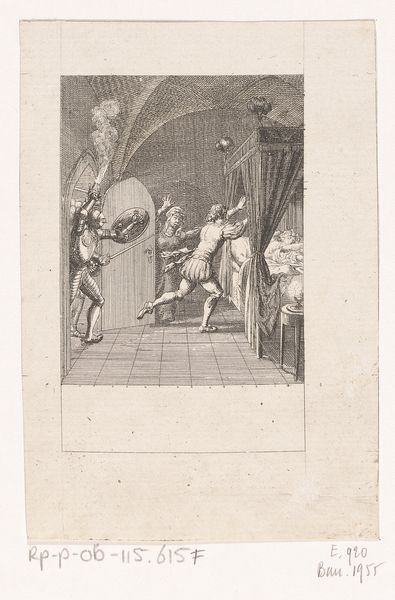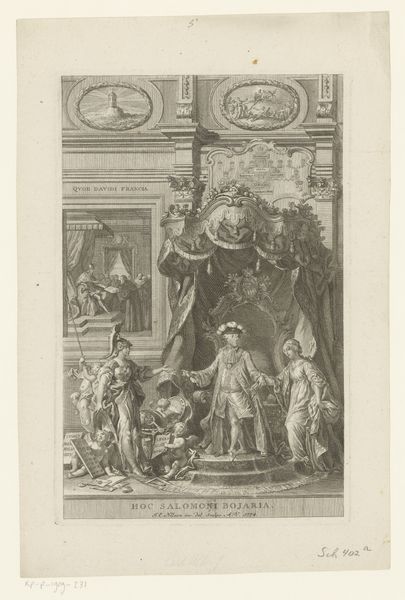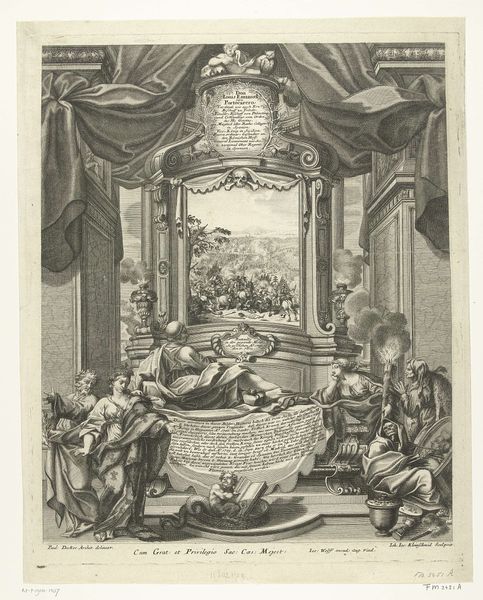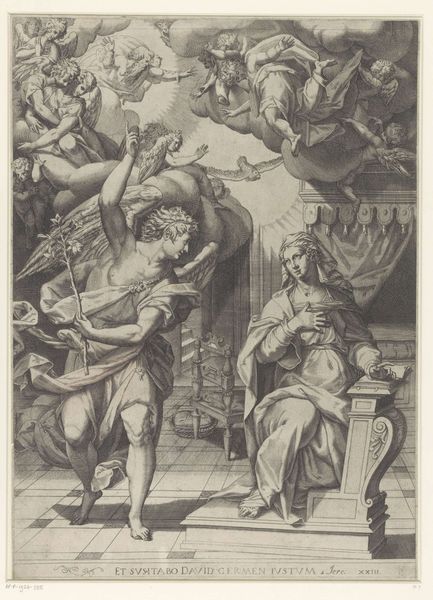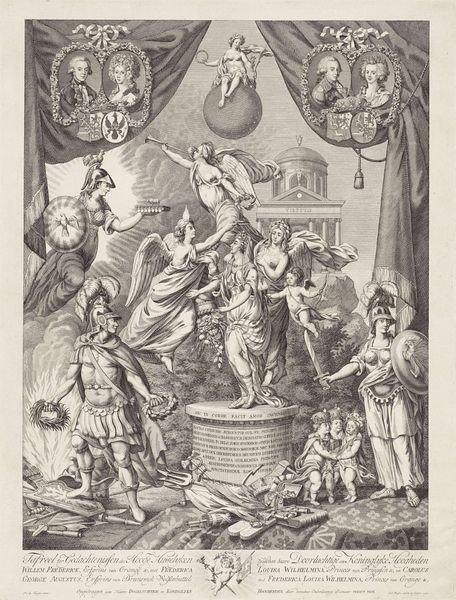
Allegorische voorstelling van de meerderjarigheid van prins Willem V, 1766 1774 - 1776
0:00
0:00
noachvanderiimeer
Rijksmuseum
Dimensions: height 187 mm, width 122 mm
Copyright: Rijks Museum: Open Domain
Curator: Right now we are standing in front of a work from between 1774 and 1776, "Allegorische voorstelling van de meerderjarigheid van prins Willem V, 1766," or "Allegorical Representation of the Majority of Prince William V, 1766". It's an engraving by Noach van der Meer the Younger, currently residing here at the Rijksmuseum. Editor: Wow, it's...busy! My first thought is theater, like some grand operatic staging. So much detail crammed into a fairly small space; there's a sort of swirling chaos of figures fighting with tranquility as this guy sits on the thrown in the center. I wonder what it’s all about? Curator: Well, let's unpack some of that visual chaos. The piece commemorates Prince William V assuming his majority, that is, reaching the age where he could rule without a regent. Van der Meer uses allegory, a common tool at the time, to elevate the event. So this print, in essence, visualizes the hopes invested in William's leadership. Editor: Allegory makes sense. I mean, that’s an intense amount of symbolic weight to carry in a print! Look at the putti overhead— they’re holding the chains, aren’t they, trying to usher in an era of enlightenment, maybe? Curator: Exactly! Those details serve a propagandistic purpose. Notice how the composition places Willem at the center of a virtuous constellation – angelic figures and personifications of virtues. Meanwhile, figures like Hercules at the base symbolize the crushing of vice and discord. It's a carefully constructed image designed to legitimize and celebrate power. Editor: Hercules, that's right! It’s as if the entire print is trying to reassure you. Like, 'It's going to be okay, we got this". But the very act of needing that much reassurance feels… a bit fragile, don’t you think? As if the prince actually might not be able to carry all that? Curator: And that’s a perfect entry into understanding the cultural moment. The House of Orange was facing challenges to its authority. This print becomes a piece of strategic visual rhetoric aimed at bolstering public confidence amidst political uncertainties. Editor: Right. Seeing it as strategic communication adds another layer of complexity. I initially got swept up in the visual drama. Curator: And that drama served a clear, if you’ll permit me to say, political goal! I see Van der Meer’s work and so much academic art, as being the production of social narratives, often tied tightly to those who are paying to display these stories. Editor: Well, it’s funny; by dissecting its historical purpose we gave it even more narrative depth and maybe unintentionally highlighted the political spin so that it just might miss.
Comments
No comments
Be the first to comment and join the conversation on the ultimate creative platform.
